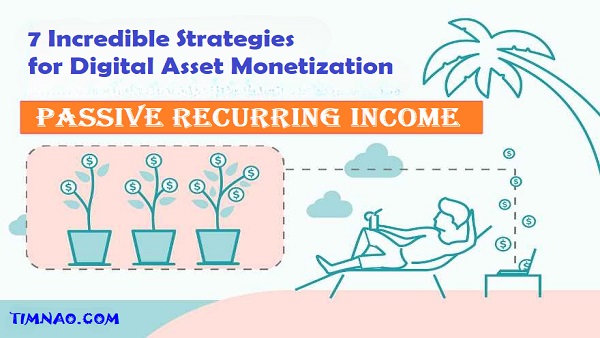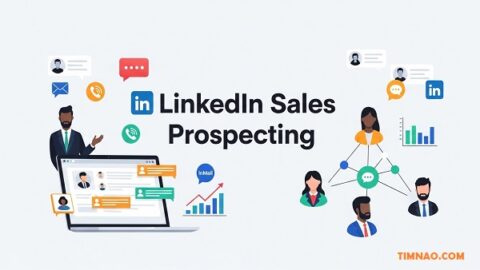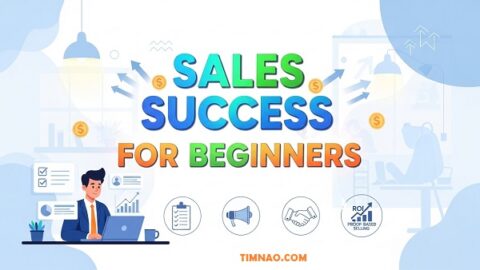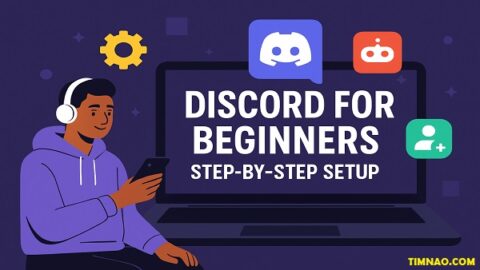🚀 Unlock Amazing Freedom: Your Ultimate Guide to Building Passive Recurring Income!
Are you dreaming of a life where your income isn’t directly tied to the hours you work? A life where money flows in, even while you sleep, travel, or pursue your passions? This isn’t a far-fetched fantasy; it’s the reality of passive recurring income. If you’re a beginner eager to explore online income streams for beginners and understand the magic of digital asset monetization, you’ve come to the right place! This ultimate guide will demystify these concepts and provide you with actionable steps to start building your own streams of automated income.
The concept of “do once, get paid again and again” is at the heart of passive income. It’s about creating or acquiring assets—digital assets, in particular—that continue to generate revenue with minimal ongoing effort. Forget trading time for money; it’s time to make your money work for you. Let’s embark on this exciting journey to financial empowerment!
Table of Contents
- 🌟 What Exactly is Passive Recurring Income? (And Why You Need It!)
- 💡 The Power of Digital Assets: Your First Step to Online Income Streams for Beginners
- 🛠️ Popular & Profitable: Exploring Top Online Income Streams for Beginners in 2025
- ✍️ Blogging for Bucks: Creating Content That Pays
- 📣 Affiliate Marketing Mastery: Earn by Recommending
- 📚 eBook Empires: Publishing Your Way to Passive Profits
- 🎓 Online Courses & Memberships: Share Your Knowledge, Reap Rewards
- 🖼️ Creative Cashflow: Selling Digital Designs & Stock Media
- 💧 Dropshipping Demystified: E-commerce Without Inventory
- 📈 Investing Insights: REITs, Dividends, and P2P Lending
- 🔑 The “Digital Dealmaker” Mindset: Leveraging Existing Assets
- 🚀 Setting Up for Success: Essential Tools for Automating Your Income
- 📈 SEO for Your Income Streams: Making Sure You Get Found
- 🤔 Common Pitfalls for Beginners (And How to Avoid Them!)
- 🏁 Your Action Plan: Taking the First Steps Towards Passive Recurring Income Today!
- ❓ Frequently Asked Questions (FAQs) About Passive Recurring Income
🌟 What Exactly is Passive Recurring Income? (And Why You Need It!)
Let’s start at the beginning. Passive recurring income is money earned with minimal active effort to maintain it after the initial setup. Think of it like planting a tree: you put in the effort to plant and nurture it initially, but once it matures, it bears fruit year after year with much less work. This contrasts sharply with active income, like a traditional job, where your earnings stop if you stop working.
Why is this so important for beginners?
- Financial Freedom: Passive income streams can reduce financial stress, cover your living expenses, and give you the freedom to pursue what you truly love, rather than being chained to a desk.
- Scalability: Unlike a job where your income is often capped by hours or salary, many passive income models have unlimited earning potential. You can scale your digital assets to reach a wider audience.
- Time Liberation: Imagine having more time for family, hobbies, travel, or personal development. Passive income helps you reclaim your most valuable asset: your time.
- Security: Diversifying your income with passive streams provides a safety net. If one source falters, others can sustain you.
The journey to significant passive recurring income requires upfront work, learning, and patience. It’s not a get-rich-quick scheme. But for those willing to invest their time and effort strategically, the rewards can be transformative. The digital age has opened unprecedented opportunities for creating such income streams, especially through digital asset monetization.
Many people believe they need a groundbreaking invention or a massive investment to start. This is a common misconception. Often, the most successful online income streams for beginners are built on simple ideas, consistently executed, and smartly marketed. The key is to understand the principles and choose a path that aligns with your skills and interests.
💡 The Power of Digital Assets: Your First Step to Online Income Streams for Beginners
So, what are these “digital assets” we keep mentioning? A digital asset is any non-physical item of value that you own or control, existing in a digital format. Digital asset monetization is the process of turning these assets into revenue-generating streams. For anyone looking into online income streams for beginners, understanding and leveraging digital assets is crucial.
Examples of digital assets include:
- Content: Blog posts, articles, eBooks, research papers, guides.
- Media: Videos, podcasts, music, photographs, graphic designs, templates.
- Software & Tools: Mobile apps, web applications, WordPress plugins, browser extensions.
- Information Products: Online courses, webinars, membership sites, premium newsletters.
- Online Presence: Websites with high traffic, established social media accounts, email lists.
The beauty of digital assets is their scalability and low reproduction cost. Once created, an eBook can be sold thousands of times without incurring significant additional printing or distribution costs like a physical book. An online course can enroll students from all over the world simultaneously. This is where the “do once, get paid again and again” principle truly shines.
Why are digital assets perfect for passive recurring income?
- Low Overhead: Compared to physical businesses, digital assets often require minimal startup capital and ongoing operational costs.
- Global Reach: The internet allows you to market and sell your digital assets to a global audience, 24/7.
- Automation Potential: Many aspects of selling and delivering digital products can be automated, from payment processing to content delivery.
- Flexibility: You can create and manage your digital assets from anywhere with an internet connection.
For beginners, starting small is key. You don’t need to create a complex software application overnight. Perhaps you have a knack for writing, a passion for teaching a specific skill, or an eye for design. These can all be starting points for creating your first digital asset. The initial focus should be on providing value and solving a problem for a specific audience. As you gain experience, you can expand your portfolio of digital assets, further diversifying your passive recurring income streams.
🛠️ Popular & Profitable: Exploring Top Online Income Streams for Beginners in 2025
The digital landscape is brimming with opportunities for passive recurring income. Let’s explore some of the most popular and beginner-friendly online income streams for beginners, keeping in mind the latest trends for 2025. Remember, digital asset monetization is the common thread.
✍️ Blogging for Bucks: Creating Content That Pays
Blogging is far from dead; it has evolved. By creating valuable, engaging, and SEO-optimized content on a topic you’re passionate about, you can build an audience and monetize it through various means:
- Advertising: Display ads (e.g., Google AdSense) on your site.
- Affiliate Marketing: Recommending products/services and earning a commission.
- Selling Digital Products: eBooks, templates, printables, or courses related to your blog’s niche.
- Sponsored Posts: Brands pay you to write about their products (ensure transparency).
Getting Started:
- Choose a niche you’re knowledgeable and passionate about.
- Set up a WordPress blog (platforms like Bluehost or SiteGround offer easy setups).
- Consistently publish high-quality content. Focus on solving your audience’s problems.
- Learn basic SEO to attract organic traffic. Tools like Rank Math can be invaluable here.
Blogging requires consistency and patience. Traffic and income won’t appear overnight. However, a well-established blog is a powerful digital asset that can generate passive recurring income for years.
📣 Affiliate Marketing Mastery: Earn by Recommending
Affiliate marketing is a performance-based model where you promote other companies’ products or services. When someone makes a purchase through your unique affiliate link, you earn a commission. This is one of the most accessible online income streams for beginners.
- How it works: You can integrate affiliate links into your blog posts, social media, YouTube videos, or email newsletters.
- Key to success: Only promote products you genuinely believe in and that are relevant to your audience. Authenticity builds trust.
Getting Started:
- Identify products or services your target audience would find valuable.
- Join affiliate programs (e.g., Amazon Associates, ClickBank, ShareASale, or individual company programs like GetResponse’s affiliate program mentioned in search results).
- Create content that naturally incorporates your affiliate links. This could be reviews, tutorials, or comparison posts.
With effective digital asset monetization of your content platforms, affiliate marketing can become a significant source of passive recurring income.
📚 eBook Empires: Publishing Your Way to Passive Profits
If you have expertise in a particular area or a story to tell, writing and self-publishing an eBook can be a fantastic way to generate passive recurring income.
- Platforms: Amazon Kindle Direct Publishing (KDP) is the giant, but other platforms like Kobo Writing Life or Apple Books exist.
- Low Cost, High Margin: Once the eBook is written and formatted, the cost of selling additional copies is virtually nil.
Getting Started:
- Choose a topic that has an audience and that you can write authoritatively about.
- Write and edit your eBook thoroughly. Consider a professional cover design.
- Format it according to platform guidelines and publish.
- Promote your eBook through your website, social media, or email list.
An eBook is a quintessential digital asset. The work is upfront, but the sales can continue for a long time, contributing to your online income streams for beginners.
🎓 Online Courses & Memberships: Share Your Knowledge, Reap Rewards
The demand for online learning is booming. If you possess a skill or knowledge that others want to learn, creating an online course or a membership site can be highly lucrative.
- Online Courses: Package your expertise into video lessons, downloadable resources, and quizzes. Platforms like Teachable, Udemy, or Thinkific make it easy to host and sell courses.
- Membership Sites: Offer exclusive content, a community, or ongoing support for a recurring subscription fee. Platforms like Patreon or tools within WordPress can facilitate this.
Getting Started:
- Identify a specific problem you can help people solve or a skill you can teach.
- Outline your course content or membership offering.
- Create high-quality content (videos, PDFs, etc.).
- Choose a platform and set up your sales page.
- Market your course/membership to your target audience.
These forms of digital asset monetization require significant initial effort but can generate substantial and consistent passive recurring income.
🖼️ Creative Cashflow: Selling Digital Designs & Stock Media
If you’re artistic or have design skills, you can create and sell digital designs, templates, stock photos, or videos.
- Digital Designs: Social media templates, presentation themes, website templates, printables (planners, checklists), fonts, icons. Sell on marketplaces like Etsy, Creative Market, or ThemeForest.
- Stock Media: High-quality photos and videos. Submit to platforms like Shutterstock, Adobe Stock, or iStock.
Getting Started:
- Identify a niche or style where your creative skills can shine.
- Create a portfolio of high-quality digital assets.
- Upload them to relevant marketplaces, paying attention to keywords and descriptions.
While individual sales might be small, volume can lead to a steady stream of passive recurring income. This is a great example of online income streams for beginners with a creative flair.
💧 Dropshipping Demystified: E-commerce Without Inventory
Dropshipping is an e-commerce model where you sell products online without holding any inventory yourself. When a customer1 places an order, you purchase the item from a third-party supplier who then ships it directly to the customer.
- Low Risk: You don’t need to invest heavily in stock upfront.
- Flexibility: You can run your store from anywhere.
Getting Started:
- Choose a niche and research products with good demand and reasonable supplier prices (e.g., via AliExpress).
- Set up an online store using platforms like Shopify or WooCommerce (for WordPress).
- Find reliable suppliers.
- Market your products effectively (social media ads, SEO, content marketing).
While dropshipping can involve more ongoing customer service and supplier management than some other passive models, parts of it can be automated, making it a viable option for passive recurring income. It’s a popular choice for those looking into online income streams for beginners in e-commerce.
📈 Investing Insights: REITs, Dividends, and P2P Lending
While the focus of this guide is primarily on creating digital assets, it’s worth noting that investing can also generate passive income.
- Dividend Stocks: Companies pay a portion of their profits to shareholders.
- Real Estate Investment Trusts (REITs): Invest in a portfolio of income-generating real estate without directly owning property.2
- Peer-to-Peer (P2P) Lending: Lend money to individuals or businesses through platforms like LendingClub or Prosper and earn interest. (Source: Google Search Result snippet on Printify/GetResponse)
Getting Started:
- Educate yourself thoroughly about each investment type and its risks.
- Start with small amounts you can afford to lose.
- Consider consulting a financial advisor.
These options require capital upfront and involve market risks, but can be a component of a diversified passive recurring income strategy.
🔑 The “Digital Dealmaker” Mindset: Leveraging Existing Assets
The document that inspired this post talks about becoming a “digital dealmaker.” This concept is about more than just creating your own assets from scratch; it’s also about identifying and leveraging existing digital assets, potentially created by others, and finding ways to monetize them or enhance their monetization. This approach can sometimes fast-track your journey to passive recurring income.
What does a digital dealmaker do?
- Acquires Underperforming Assets: They might buy websites with traffic potential but poor monetization, then optimize them for revenue.
- Partnerships & Joint Ventures: They collaborate with other creators or businesses to combine strengths and reach wider audiences. For example, partnering with an influencer to promote your digital product.
- Licenses Content: They might license content from others to use in their own products or platforms, or license their own content out.
- Optimizes Existing Platforms: They might help businesses that already have an online presence but aren’t effectively using it for digital asset monetization.
This mindset requires a good understanding of online marketing, SEO, and valuation of digital properties. It’s perhaps a more advanced strategy but is built upon the foundational knowledge of how online income streams for beginners actually work.
For a beginner, the “digital dealmaker” approach might start small:
- Guest Posting: Leveraging another blog’s audience to build your own.
- Collaborative Products: Co-creating an eBook or course with someone who has a complementary skill set.
- Improving an Existing Small Project: Perhaps you take over a small, neglected blog or social media page from a friend and revitalize it.
The core idea is to look for opportunities where value can be unlocked or amplified, often by connecting different pieces of the digital puzzle. This proactive approach to digital asset monetization can significantly accelerate the growth of your passive recurring income.
🚀 Setting Up for Success: Essential Tools for Automating Your Income
Automation is a cornerstone of true passive recurring income. The right tools can handle repetitive tasks, manage your sales, deliver your products, and communicate with your customers, freeing up your time to focus on growth or simply enjoy your earnings. Here are some categories of tools crucial for anyone serious about online income streams for beginners and digital asset monetization:
-
Website & Blogging Platforms:
- WordPress.org: The most popular self-hosted platform, offering immense flexibility. Requires hosting.
- WordPress.com: A simpler, hosted version.
- Website Builders like Wix or Squarespace: User-friendly, all-in-one solutions.
- For WordPress, themes and builders like Divi by Elegant Themes can help create professional-looking sites without code. (Source: Google Search result snippet on Elegant Themes)
-
E-commerce & Digital Product Delivery:
- Shopify: Excellent for physical products (including dropshipping) and digital goods.
- WooCommerce: A powerful, free e-commerce plugin for WordPress.
- Gumroad: Simple platform for selling digital products directly to your audience.
- Easy Digital Downloads (EDD): A WordPress plugin specifically for selling digital files.
- Platforms for Courses/Memberships: Teachable, Thinkific, Podia, Patreon.
-
Email Marketing Services:
- Building an email list is crucial for long-term success.
- Mailchimp: Beginner-friendly with a free plan.
- ConvertKit: Popular with creators.
- GetResponse: Offers robust automation features. (Source: Google Search result snippet on GetResponse)
- WordPress plugins like Bloom by Elegant Themes help create opt-in forms.
-
Payment Processors:
-
SEO & Analytics Tools:
- Google Analytics: Essential for tracking website traffic and user behavior.
- Google Search Console: Monitor your site’s performance in Google search.
- Rank Math or Yoast SEO: WordPress plugins to help optimize your content for search engines. (Source: Google Search result snippets on Rank Math)
- Ahrefs Free Webmaster Tools or Ubersuggest (free version): For keyword research and site audits.
-
Automation & Workflow Tools:
- Zapier: Connects different apps and automates workflows between them (e.g., when someone buys your product, automatically add them to your email list and send a welcome message). (Source: Google Search result snippet on Zapier)
- IFTTT (If This Then That): Similar to Zapier, good for simpler automations.
-
Graphic Design Tools:
- Canva: Incredibly user-friendly for creating graphics, social media posts, presentations, and even simple videos, even if you’re not a designer.
- Adobe Express: Another great option for quick designs.
-
AI Writing & Content Creation Assistants:
- Tools like Jasper.ai (formerly Jarvis) or Writesonic (mentioned in Elegant Themes search snippet) can help brainstorm ideas, outline content, or even draft initial versions. Always edit and add your unique voice.
- ChatGPT: Useful for research, idea generation, and outlining.
Choosing the right tools depends on your specific online income streams for beginners and your budget. Many offer free plans or trials, allowing you to experiment before committing. The goal is to create a tech stack that supports your digital asset monetization efforts efficiently.
📈 SEO for Your Income Streams: Making Sure You Get Found
Creating amazing digital assets or setting up online income streams for beginners is only half the battle. If no one3 can find you, your efforts in digital asset monetization will fall flat. This is where Search Engine Optimization (SEO) comes in. SEO is the practice of optimizing your online content so that search engines like Google are more likely to show it as a top result for relevant searches. Good SEO is crucial for sustainable passive recurring income.
Here are key SEO principles for beginners, aligned with Rank Math’s guidance:
-
Understand Your Audience & User Intent:
- Who are you trying to reach? What problems are they trying to solve? What kind of information are they looking for?
- Content should satisfy the intent behind a search query (e.g., informational, navigational, transactional). (Source: Rank Math SEO Content Guide snippet)
-
Keyword Research:
- Identify the terms and phrases (keywords) your target audience is using to search for information related to your niche or products.
- Focus on your primary “focus keyword” for each piece of content (like “passive recurring income” for this article).
- Use long-tail keywords (more specific phrases, e.g., “best passive recurring income ideas for students”) as they often have less competition and higher conversion rates. (Source: Rank Math SEO Content Guide snippet)
- Tools: Google Keyword Planner (free with Google Ads account), Ubersuggest, Ahrefs Keyword Generator (free versions), Rank Math’s keyword suggestion features.
-
Create High-Quality, Valuable Content:
- This is the most important aspect of SEO. Your content must be well-researched, informative, engaging, and provide real value.
- Aim for comprehensive content that thoroughly covers a topic.
- Originality is key. Don’t just rehash what others are saying. Add your unique perspective.
-
On-Page SEO Optimization:
- Title Tags: Your main headline (H1 tag) and SEO title should be compelling, include your focus keyword (ideally at the beginning for the SEO title), and entice clicks. Rank Math suggests including numbers and power/sentiment words.
- Meta Descriptions: A short summary (under 160 characters) that appears in search results. Include your focus keyword and a clear call to action or benefit.
- Headings (H1, H2, H3, etc.): Structure your content logically with headings. Use your focus keyword and related terms naturally in headings where appropriate.
- Keyword Placement: Naturally integrate your focus keyword and related LSI (Latent Semantic Indexing) keywords throughout your content – in the introduction, body, and conclusion. Don’t “keyword stuff” – it should read naturally. (Source: Rank Math general SEO advice)
- Image SEO: Use descriptive file names and ALT text for images, incorporating keywords where relevant.
- Internal Linking: Link to other relevant pages on your own website. This helps search engines understand your site structure and spreads “link equity.”
- External Linking: Link out to authoritative, relevant external sources. This can add credibility.
- URL Structure: Keep URLs short, descriptive, and include your focus keyword (like the slug for this article).
-
Make Content Scannable & Readable:
- Use short paragraphs (3-5 sentences, as requested for this article).
- Use bullet points, numbered lists, bold text, and white space to break up text.
- Ensure your website is mobile-friendly.
-
Website Speed & Performance:
- A fast-loading website provides a better user experience and is favored by search engines. Optimize images, use good hosting, and leverage caching.
-
Build Natural Links (Off-Page SEO):
- Backlinks (links from other websites to yours) are a strong ranking factor.
- Focus on creating content so good that others want to link to it.
- Guest blogging on reputable sites in your niche can be a good strategy.
Using an SEO plugin like Rank Math on WordPress can greatly simplify many of these on-page SEO tasks, providing checklists and suggestions as you write. Implementing good SEO from the start for your online income streams for beginners will pay dividends in organic traffic and, ultimately, more passive recurring income.
🤔 Common Pitfalls for Beginners (And How to Avoid Them!)
Embarking on the journey to passive recurring income is exciting, but it’s easy for beginners to stumble. Awareness of common pitfalls can save you time, effort, and discouragement.
-
The “Get Rich Quick” Mentality:
- Pitfall: Expecting significant passive income overnight with minimal effort.
- Avoidance: Understand that building sustainable online income streams for beginners takes time, consistent effort upfront, and patience. Focus on providing value first.
-
Lack of Niche Focus (Trying to Be Everything to Everyone):
- Pitfall: Creating content or products for a very broad audience, making it hard to stand out or effectively target marketing.
- Avoidance: Choose a specific niche where you have some knowledge or passion. This helps in creating targeted digital asset monetization strategies. As you grow, you can expand.
-
Ignoring Audience Research:
- Pitfall: Creating products or content based solely on what you think is good, without understanding what your target audience actually wants or needs.
- Avoidance: Conduct surveys, read forums, analyze competitor offerings, and engage with potential customers to understand their pain points and desires.
-
Poor Quality Content or Product:
- Pitfall: Rushing to launch something subpar. This leads to bad reviews, no repeat customers, and a damaged reputation.
- Avoidance: Invest time in creating high-quality, well-researched, and polished digital assets. Get feedback before a wide launch.
-
Not Building an Email List:
- Pitfall: Relying solely on search engine traffic or social media, which can be unpredictable.
- Avoidance: Start building an email list from day one. Offer a valuable lead magnet (freebie) in exchange for email addresses. This gives you a direct communication channel with your audience.
-
Giving Up Too Soon:
- Pitfall: Getting discouraged when results don’t come quickly and abandoning projects prematurely.
- Avoidance: Set realistic expectations. Building passive recurring income is a marathon, not a sprint. Track small wins, learn from failures, and stay consistent.
-
Fear of Technical Aspects or Overwhelm:
- Pitfall: Letting the technical side of setting up websites, payment systems, or automation tools paralyze you.
- Avoidance: Start simple. Use beginner-friendly tools. There are countless tutorials available online. Don’t be afraid to learn step-by-step or outsource complex tasks if necessary.
-
Neglecting Marketing and Promotion:
- Pitfall: Creating a great digital asset but then expecting people to find it magically.
- Avoidance: Develop a marketing plan. This includes SEO, social media promotion, content marketing, and potentially paid advertising if your budget allows. Effective digital asset monetization requires visibility.
-
Ignoring Legal and Financial Responsibilities:
- Pitfall: Not understanding tax implications, copyright issues, or terms of service for platforms used.
- Avoidance: Research basic business legalities. Understand copyright for any content you use or create. Keep track of income and expenses for tax purposes. Consider consulting professionals if needed.
By being aware of these common mistakes, beginners can navigate the path to passive recurring income more effectively and increase their chances of success with online income streams for beginners.
🏁 Your Action Plan: Taking the First Steps Towards Passive Recurring Income Today!
Reading about passive recurring income is inspiring, but taking action is what creates results. Here’s a simplified action plan for beginners ready to explore online income streams for beginners and digital asset monetization:
-
Self-Reflection & Goal Setting (1-2 Days):
- What are your skills, passions, and knowledge areas? What could you teach, write about, or create?
- How much time can you realistically commit each week? Be honest.
- What are your initial income goals? Start small and achievable to build momentum.
- Why do you want passive income? Having a strong “why” will keep you motivated.
-
Niche & Idea Validation (3-5 Days):
- Brainstorm 3-5 potential passive income ideas based on your reflections (e.g., a blog about a hobby, an eBook on a skill you have, an affiliate site for products you use).
- Do basic market research: Are people searching for information on these topics? Are there existing products? (Use Google Trends, keyword tools, browse forums like Reddit or Quora).
- Identify a target audience: Who would benefit most from your idea?
- Choose ONE idea to start with. Don’t try to do everything at once.
-
Choose Your First Focus Keyword:
- Based on your chosen idea, select a primary focus keyword. For example, if you choose to blog about “vegan recipes for athletes,” that could be your focus.
-
Platform & Tool Setup (1 Week – can overlap with content creation):
- Select your platform(s): If blogging, set up WordPress. If an eBook, familiarize yourself with Amazon KDP. If an online course, explore Teachable or Udemy.
- Set up essential accounts: Google Analytics, Google Search Console.
- Choose an email marketing service (even if you just start with a basic landing page to collect emails).
-
Create Your Minimum Viable Product (MVP) or First Piece of Content (2-4 Weeks, ongoing):
- If blogging: Write your first 5-10 high-quality, SEO-optimized blog posts around your focus keyword and related topics.
- If an eBook: Write the first draft.
- If a course: Outline the modules and create the first few lessons.
- Focus on providing value. Don’t aim for perfection in the first iteration, aim for “good enough to launch and get feedback.”
-
Basic SEO Implementation (Ongoing):
- Apply on-page SEO principles to your content as you create it (titles, meta descriptions, headings, keyword usage). Use a plugin like Rank Math if on WordPress.
-
Launch & Initial Promotion (1 Week):
- Publish your blog, eBook, or course.
- Share it with your existing network (friends, family, social media contacts).
- Post in relevant online communities (where allowed and genuinely helpful).
-
Learn, Iterate, & Be Consistent (Ongoing FOREVER):
- Track your results: Use Google Analytics to see what’s working.
- Gather feedback: Listen to your audience.
- Continuously learn: Stay updated on your niche, marketing strategies, and tools.
- Be consistent: Regularly publish content, engage with your audience, and look for ways to improve. This is crucial for long-term passive recurring income.
This plan is a starting point. Your journey into online income streams for beginners will be unique. The most important step is the first one: Decide to start, and then take consistent action. The world of digital asset monetization awaits!
❓ Frequently Asked Questions (FAQs) About Passive Recurring Income
Here are some common questions beginners have about passive recurring income, digital asset monetization, and online income streams for beginners:
-
Q1: How much money can I realistically make with passive income as a beginner?
- A: This varies wildly. Initially, it might be very little, or even nothing, as you build your assets and audience. Some people start earning a few hundred dollars a month within 6-12 months, while for others it takes longer. The key is consistency and providing value. There’s no upper limit, but don’t expect to get rich overnight.
-
Q2: Do I need a lot of money to start building passive income?
- A: Not necessarily. Many online income streams for beginners, like blogging or affiliate marketing with organic traffic, can be started with very low costs (e.g., domain and basic hosting). Creating digital products like eBooks primarily costs your time. Some investment might be needed for tools or education as you scale.
-
Q3: Is passive income truly “passive”?
- A: Mostly, but not 100%. All passive income streams require significant upfront work to create and set up. Once established, they require less ongoing work than active income, but some maintenance, updating, marketing, or customer service might still be needed to keep the income flowing. The goal is to automate as much as possible.
-
Q4: What is the easiest passive income stream to start for a beginner?
- A: “Easiest” is subjective and depends on your skills. Affiliate marketing (if you can create content) or selling simple digital products (like printables on Etsy if you have design skills) are often cited as relatively accessible starting points for digital asset monetization. Blogging is straightforward to start but takes time to build traffic.
-
Q5: How long does it take to see results from passive income efforts?
- A: Be prepared for it to take several months, or even a year or more, especially for strategies relying on organic traffic (like SEO for blogging). Building an audience and trust takes time. Quicker results might come from leveraging an existing audience or using paid advertising, but that involves more risk/cost.
-
Q6: Can I do passive income alongside my full-time job?
- A: Absolutely! Many people start building their passive recurring income streams in their spare time while still employed. It requires good time management and dedication, but it’s a common path.
-
Q7: What are the biggest risks associated with online passive income?
- A: Risks include: investing time and effort into something that doesn’t take off, changes in search engine algorithms affecting traffic, platform policy changes (e.g., an affiliate program changing its terms), competition, and burnout if you don’t manage your energy. Diversifying your income streams can mitigate some risks.
-
Q8: Do I need to be a tech expert to create online income streams?
- A: No. While some technical skills are helpful, many platforms and tools are designed to be user-friendly for beginners (e.g., WordPress with page builders, Canva for design, simple e-commerce platforms). There are tons of tutorials online, and you can always learn as you go or outsource specific technical tasks.
Building passive recurring income is a journey of learning, creating, and adapting. By understanding the fundamentals of digital asset monetization and consistently working on your chosen online income streams for beginners, you can pave your way to greater financial freedom and a lifestyle by design. Good luck!
Reference video:









